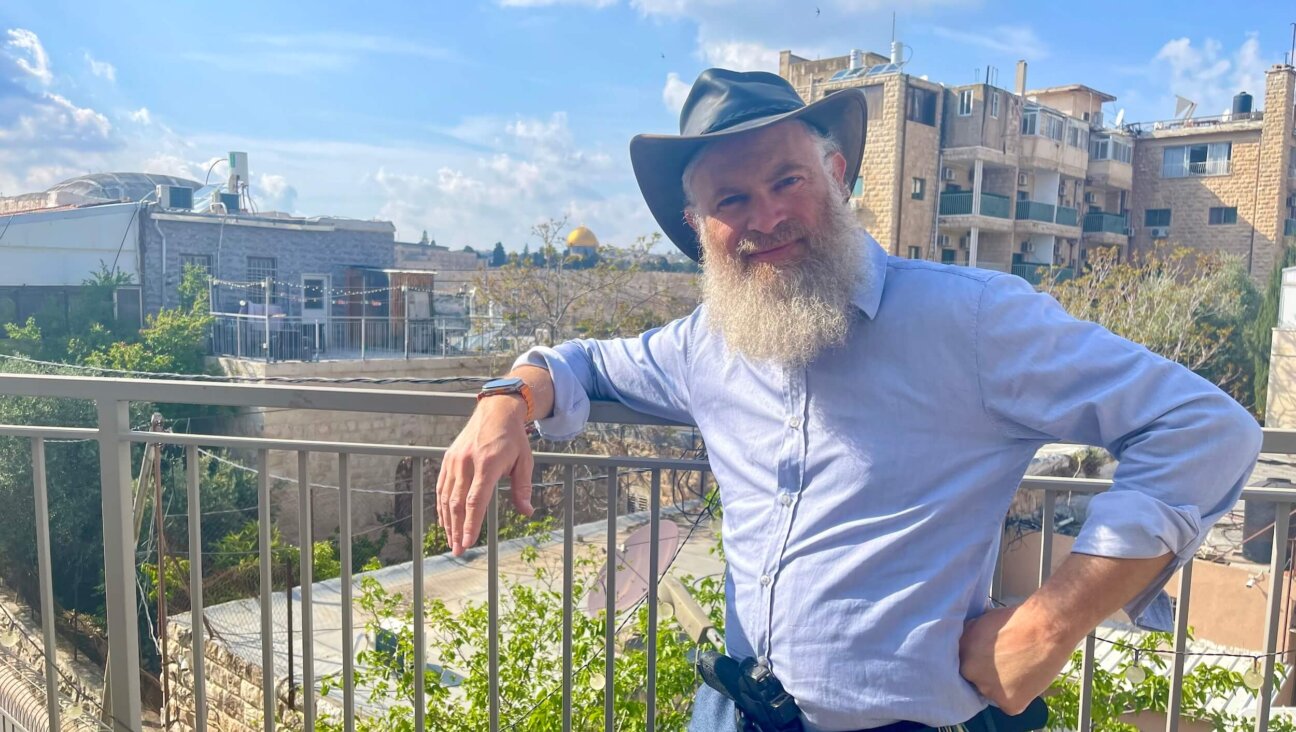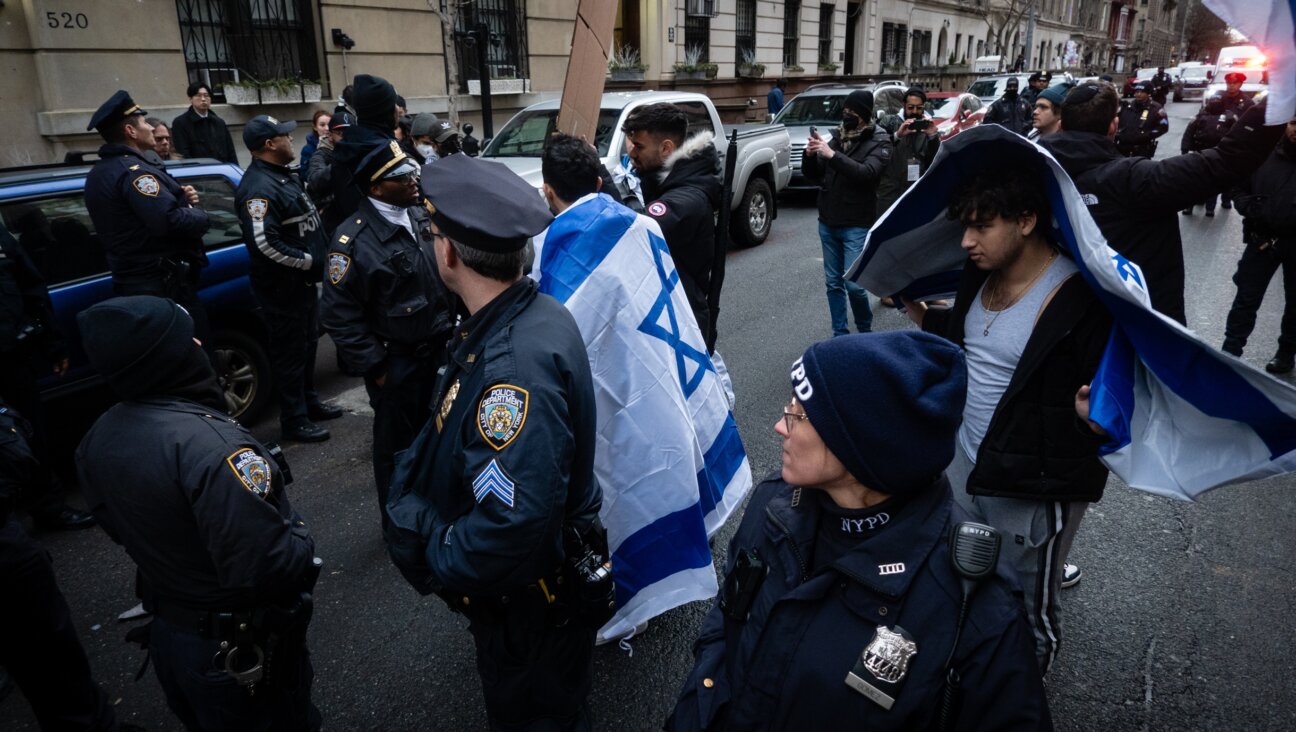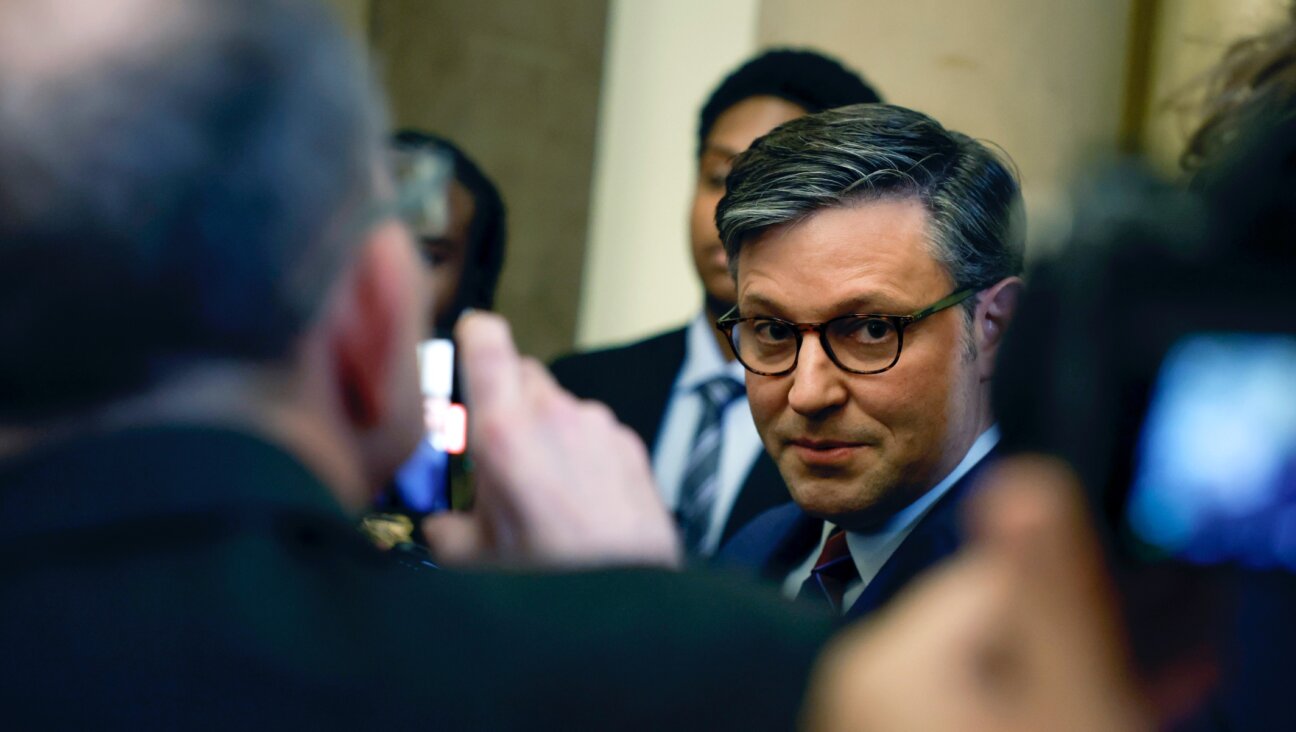Jews With Tattoos

Her two sleeves and backpiece are by blackwork specialist Daniel DiMattia (her former husband and lifelong friend). (Photo by David Kimelberg)
Craig Dershowitz started with a Kabbalah Ladder on his back, then followed with the word ZION on his right forearm. His entire torso remains a mural in progress.
Marisa Kakoulas considers herself a Grecian urn, ready to be decorated. The suit she wears as an attorney conceals her black-ink tapestry, making her feel like a superhero, she said.
They are Jews with tattoos, a trend that began on the fringe and is moving toward the mainstream. Ink-wearing Jews are not as omnipresent as in some other groups, given the proliferation of tattoos in sports and the entertainment industry, but their numbers are increasing, according to tattoo wearers, artists and the rabbis who bear witness to the branding of their flock.
Joshua Andrews, operator of hebrewtattoo.net, an online catalog of Jewish body-art samples, said he receives 35,000 visits a month to his Web site and 50 personalized design requests monthly. Yoni Zilber, an Israeli tattoo artist in Brooklyn, said he gets a customer asking for Jewish-themed adornment at least once every few weeks.
Pride, aesthetics and rebellion all play a part. To these inked-up believers, the Leviticus exhortation to “not make 20 gashes in your flesh for the dead nor incise any marks on yourself” has lost its relevance in 21st century Judaism.
“There are a number of taboos that I believe restrict modern American Jews,” Dershowitz said. “I am excited to break these taboos and to show a New York Jew as a strong, creative, artistic individual who is not afraid to wear his religion and beliefs, quite literally, on his sleeve.”
Dershowitz, a 32-year-old Morgan Stanley alum who edits a tattoo magazine called Bombin’, stood on the balcony of his 15th floor apartment with Manhattan at his feet and a tableau of an ancient past draping his upper body. Mother Israel grows out of the earth on his chest. Archangel Michael protects a kibbutznik and a soldier. On his right arm, the Lions of Judah play bodyguards to King Solomon.
The artwork does not bolster his connection to Judaism, he emphasizes; rather it forces others to recognize it.
“The permanence of a tattoo can only, rarely, be reversed,” he said. “At the same time, the passion which motivated getting it cannot be reversed at all. My family and friends, forced by either the former or the latter, have no choice but to accept.”
For the 36-year-old Kakoulas, an international-law specialist who lives in Brooklyn, her tattoos are a canvas of patterns that chart her world travels. “It’s not about making a statement,” she declared. “It’s about beauty.”
Eric Silver, a Penn State University sociology professor who has written about tattoos, attributes the increase in the practice among Jews to a larger social movement. “Tattoos have become normal among adults, and Jews come in a lot of flavors,” he said. “There’s a big chunk that are pretty assimilation-minded and want to participate fully in mainstream culture.”
But for many, the Torah still holds sway.
“Tattoos are just incompatible with Jewish values,” said Rabbi Brian Schuldenfrei of the Conservative Sinai Temple in Los Angeles. “We see the body as a holy and beautiful vessel, created by God. A tattoo only takes away from that divine beauty. So, we dismiss the practice of tattoos — but must remember not to reject the person with tattoos.”
Rabbi Eric Siroka of the Reform Temple Beth-El in South Bend, Ind., preached acceptance for the growing number of tattooed Jewish youth. “They’re wearing it the same as they would clothing or jewelry,” he said. “You have to be respectful as you would with any part of a person’s expression.”
And then there is Andrews, who appears to straddle both sides of the argument. Despite running the tattoo Web site, Andrews has no tattoos himself and declines to tattoo Jewish clients because it is “not Judaic in any capacity,” he said. “I get enough business from Goyim that I do not need Jewish business.” (He draws designs for everyone, but Jewish customers must go to another artist for the hands-on work.)
Andrews began the Hebrew calligraphy Web site on a lark and discovered a market, he said. He credits a recent spike in visitors to the his-and-hers King Solomon quote worn by David and Victoria Beckham. The words etched in Hebrew translate to “I am my beloved’s, and my beloved is mine.”
Zilber said most of his Jewish customers focus on religious themes and Hebrew lettering. As for his own body, the artist wears Tibet-inspired tats. (“I’m Jewish in the inside,” he explained.)
Although cultural mores have loosened for modern Jews — “the shock value has worn off,” Rabbi Siroka said — the decision to get a tattoo does not always come easily.
Will, an artist at a tattoo parlor in Greenwich Village where some customers have been ordering the Star of David, recalled a recent encounter. “One older guy … thought about it for a long time,” he said. “He was conflicted.” The man eventually got the tattoo, as do most of those who waver, the artist said.
There has long been controversy about whether having a tattoo prevents a Jew from being buried in a Jewish cemetery, though a spokesman for the Jewish Theological Seminary said scholars there have found no basis for this ban. Siroka called it “an old wives’ tale,” and some cemetery officials supported him.
“Internment sites here have to do with lineage of Jewish heritage,” said Kirk Taylor, the family service manager for Hillcrest Memorial Park’s Beit Olam Cemetery in Dallas. “… It has nothing to do with anything else.”
“We have a great amount of bodies coming in,” said Amber Hession, who answers the phone at Westlawn in Chicago. “I’m sure some have tattoos.”
The idea that tattoos dishonor Holocaust victims tattooed by the Nazis no longer resonates with many.
“The Holocaust wasn’t done with choice, and it was only to number people,” Zilber said. “I never get the association with the Holocaust and tattoos.”
With history and disapproval getting swept away, ink converts predict more of the faithful will visit tattoo parlors. And they’ll mean business.
Said Kakoulas: “We have not seen the saturation point.”
Ron Dicker is a freelance writer living in Brooklyn.

I hope you appreciated this article. Before you go, I’d like to ask you to please support the Forward’s award-winning journalism this Passover.
In this age of misinformation, our work is needed like never before. We report on the news that matters most to American Jews, driven by truth, not ideology.
At a time when newsrooms are closing or cutting back, the Forward has removed its paywall. That means for the first time in our 126-year history, Forward journalism is free to everyone, everywhere. With an ongoing war, rising antisemitism, and a flood of disinformation that may affect the upcoming election, we believe that free and open access to Jewish journalism is imperative.
Readers like you make it all possible. Right now, we’re in the middle of our Passover Pledge Drive and we need 500 people to step up and make a gift to sustain our trustworthy, independent journalism.
Make a gift of any size and become a Forward member today. You’ll support our mission to tell the American Jewish story fully and fairly.
— Rachel Fishman Feddersen, Publisher and CEO
Join our mission to tell the Jewish story fully and fairly.
Our Goal: 500 gifts during our Passover Pledge Drive!
























